
Stand-up paddleboarding, or SUP as it’s often abbreviated, is a hugely enjoyable outdoor pursuit that has completely overtaken kayaking and canoeing in popularity and participation numbers.
There are all kinds of stand-up paddleboards out there, including some excellent inflatable boards, which are very easy to transport and even take on holiday, and many larger models, which make excellent SUPs for beginners. Most are fairly affordable (especially in comparison to a kayak or a canoe), and they’re a really versatile craft that can be used for pure fun but also sport, fitness and even yoga.
For all these reasons, stand-up paddleboarding has picked up massive momentum miraculously fast over the last decade. These days, if you visit the beach or stroll around any stretch of coastline on a reasonably calm day, there will inevitably be a fleet of SUPs out on the water. Walk along a riverbank or canal towpath, or wander around a lakeshore where paddling is permitted, and again you’ll almost certainly see paddleboarders.
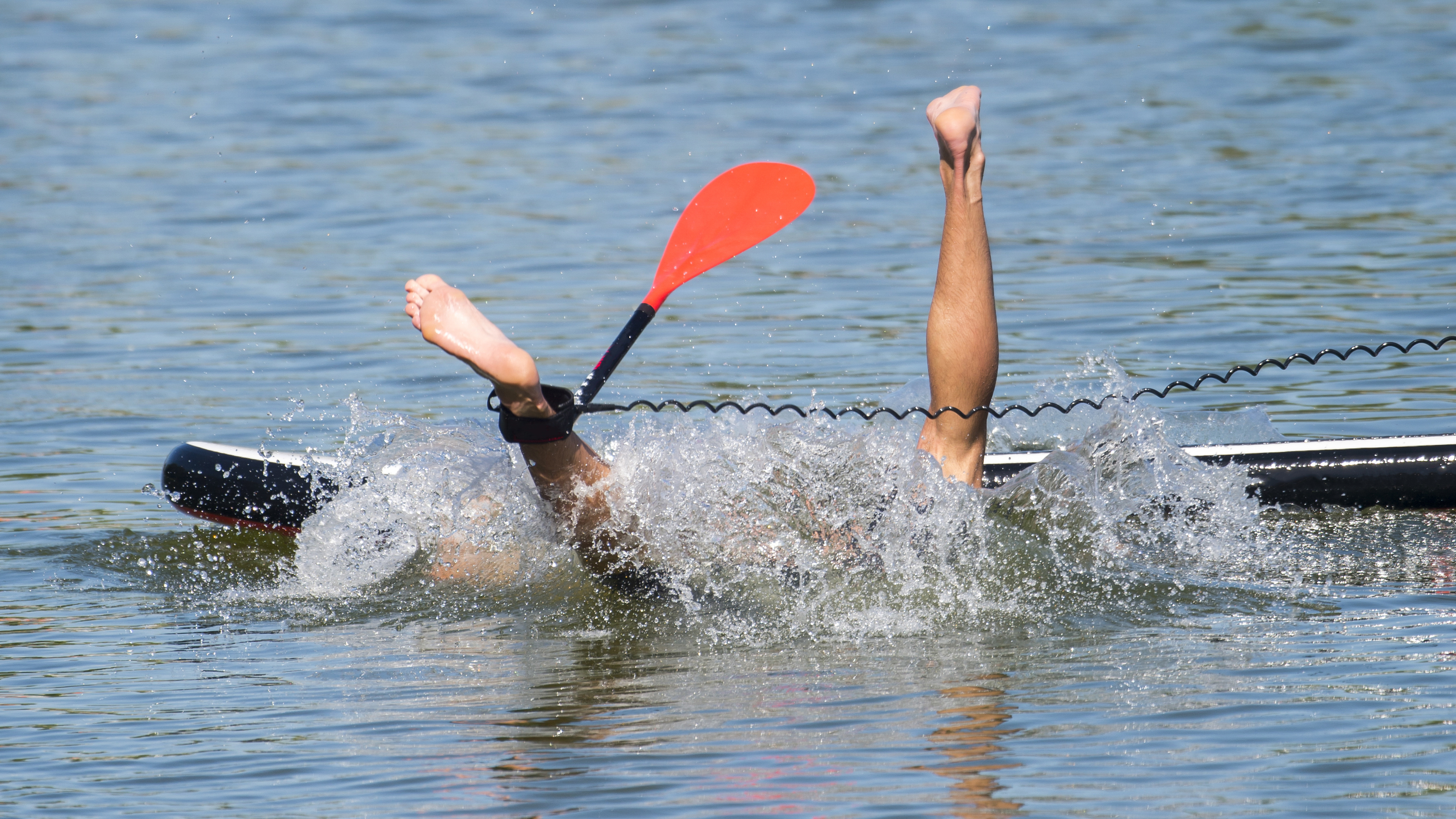
Whenever you see SUPers out on the water, especially when water conditions are anything other than complete, you’ll notice that some of them (often most of them) are kneeling or sitting on their boards rather than actually standing. And lots of the ones who do attempt to stand regularly fall in the water. This is because stand-up paddleboarding isn’t quite as beginner friendly as many people think.
Nor is it necessarily, an especially safe activity. The sea and inland waterways are dynamic environments where conditions can change fast. If you don’t really know what you’re doing, or if you are not properly geared up with the right clothing and equipment, you can quickly find yourself in a potentially dangerous situation while SUPing. Even seemingly safe scenarios, such as messing around on a SUP close to the beach, can turn ugly if you’re caught in a rip or blown out to sea by an off-shore wind.
With the ever-rising popularity of the activity, the RNLI and Coastguard are called upon to rescue an increasing number of SUPers every year – RNLI lifeboats were called out 144 times to rescue paddleboarders in 2021 and 175 times in 2022. The situation is so serious that in July, they issued some safety advice to paddlers (external link) to highlight what happens during a typical rescue.
We are not saying all this to put you off stand-up paddleboarding but to make you aware of the potential hazards. The good news is that, by taking a few sensible precautions, explained below, you can make SUPing a much safer activity.
1. Wear a life jacket
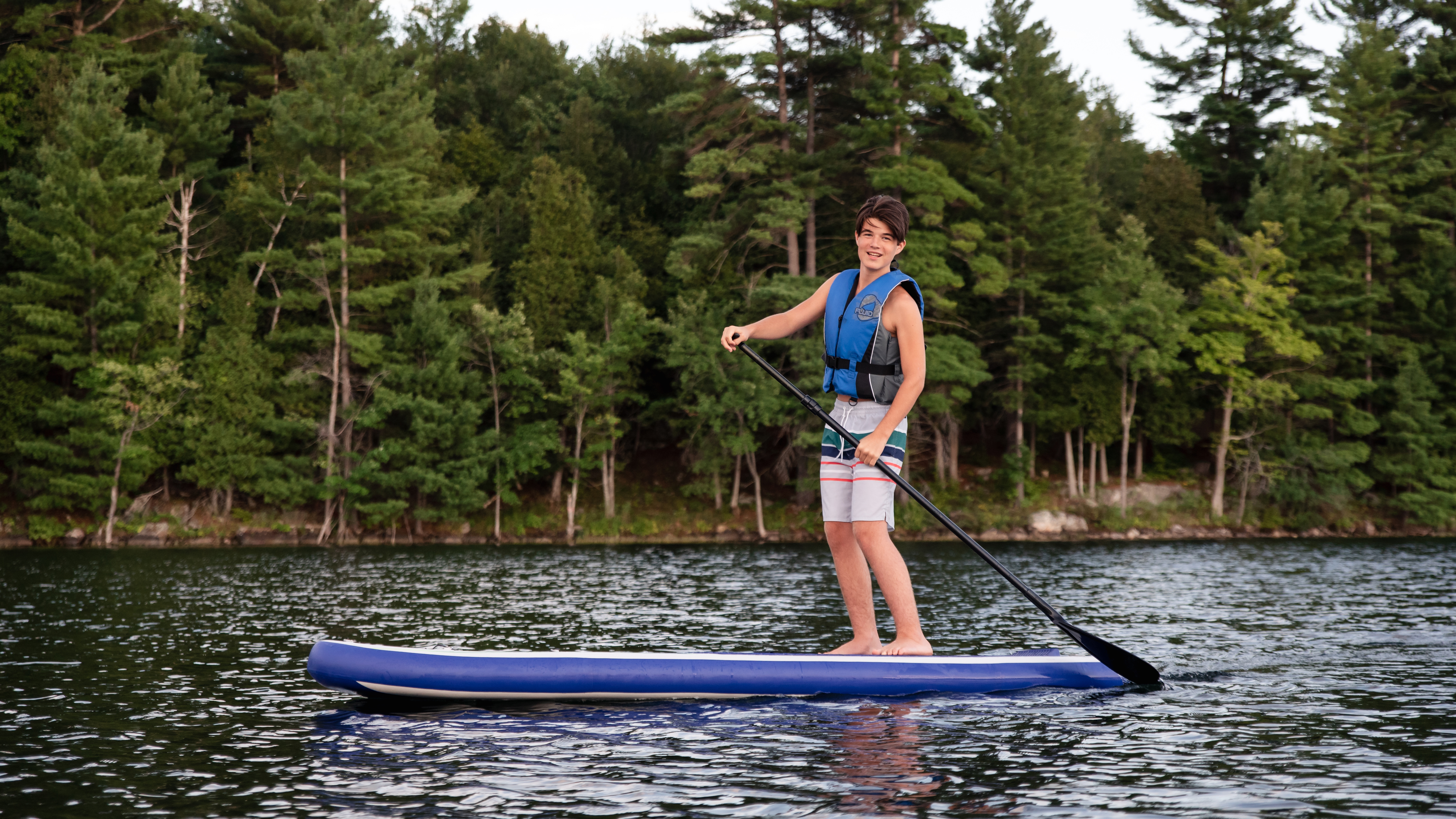
Along with the board and the paddle, it’s important to invest in the best life jacket – also known as a personal flotation device (PFD) – you can find before you start stand-up paddleboarding. Obviously, this needs to be the right size for your body weight. And then, no matter how benign you think the conditions are, always wear it when you’re out on the water. And if you’re paddling with children, make sure they are wearing one too.
2. Stay on-leash
Most good paddleboards come with a leash (if yours doesn’t, invest in one) that you can attach to your ankle. Always use this leash to connect yourself to the board. Not only will this make you a more efficient paddler (a loose leash dangling in the water can create a surprising amount of drag), but it means your board won’t get blown away from you if you fall off. Getting separated from your board can turn a dangerous situation into a deadly one.
3. Always remain with your board

As per the point above, if you end up in the water and you’re unable to remount the board, or if you find yourself getting taken out to sea by a rip, the tide or the wind, never try and swim back to shore. Always stay with your board, even if you’re unable to get back on it, as it acts as a giant floatation device and makes you easier to find during a rescue.
4. Get suited and booted
Conditions on the water can get very chilly, especially if you fall in and get wet. It’s also important to protect yourself from sunburn, which can be particularly severe on the water. While a rash vest and board shorts might feel adequate in the height of summer, it’s well worth investing in a good wetsuit to ensure you can comfortably paddle for most of the year. If you get seriously cold, you can start making bad decisions that will increase the level of risk you are exposed to.
Many put-in and take-out points necessitate walking across pebbles, sharp shells and rocks, and/or mud that might have anything in it – plus, if you fall off your board, you could step down on something sharp – so protect your feet with some good watershoes.
5. Do a stand-up paddling course
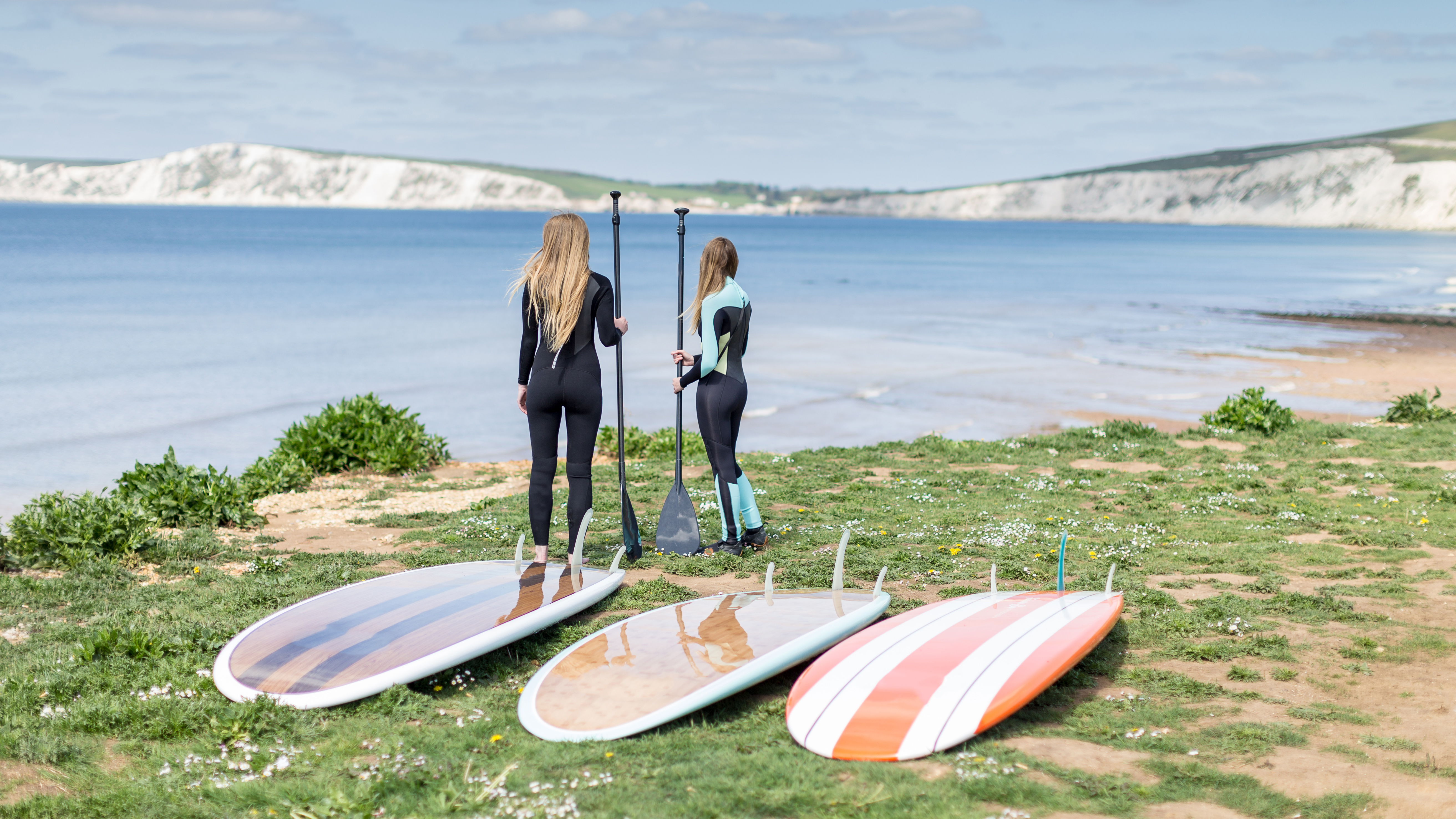
Knowing a few basic SUP tips and tricks will help you get started on your stand-up paddleboarding journey, but the best way to learn how to SUP safely and efficiently is to do a course. There are hundreds of instructors out there, but make sure you’re going out with someone who is properly qualified and accredited. Andy Gratwick, the Head Coach of the British Standup Paddle Boarding Association (external link), tells us they have 105 recognised schools nationwide in Britain, and he estimates that around 30,000 paddlers get a structured lesson through their school network each year.
6. Always check the weather, and be prepared to cancel your paddle
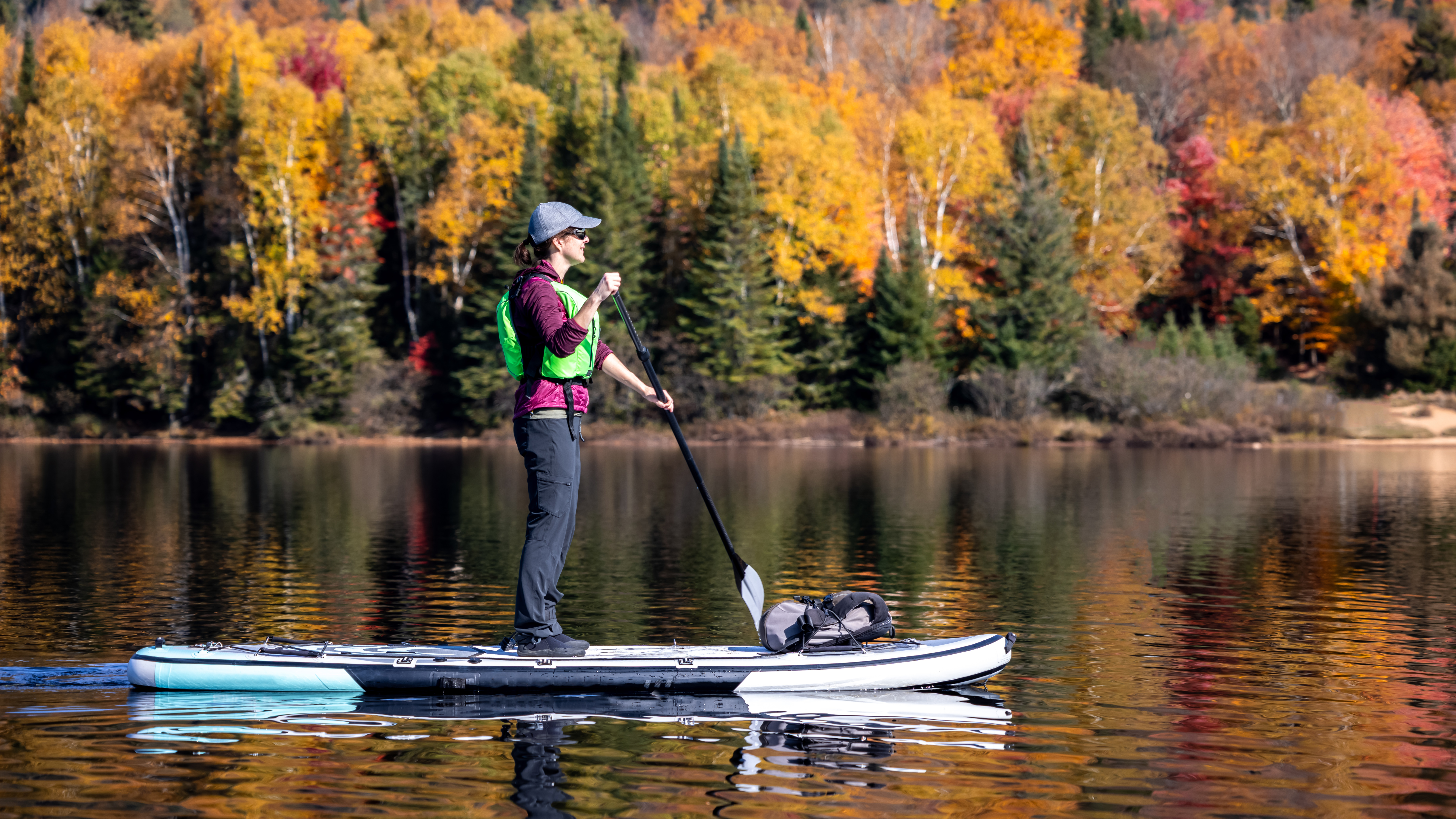
When planning a paddle, check the forecast first and foremost. Look out in particular for strong offshore winds (which can blow you out to sea scarily quickly). If an electrical storm is taking place anywhere nearby, stay off the water – you don’t want to be stood up on a board with a metal or carbon paddle in your hands when lightning strikes.
7. Communication
Take a phone or other communication device out on the water with you in a waterproof case or good dry bag, so you can call for help if things go wrong. Serious SUPers, and anyone taking on stretches of open water or paddling around remote coastlines, should carry a Personal Locator Beacon (PLB).
8. Listen to local knowledge
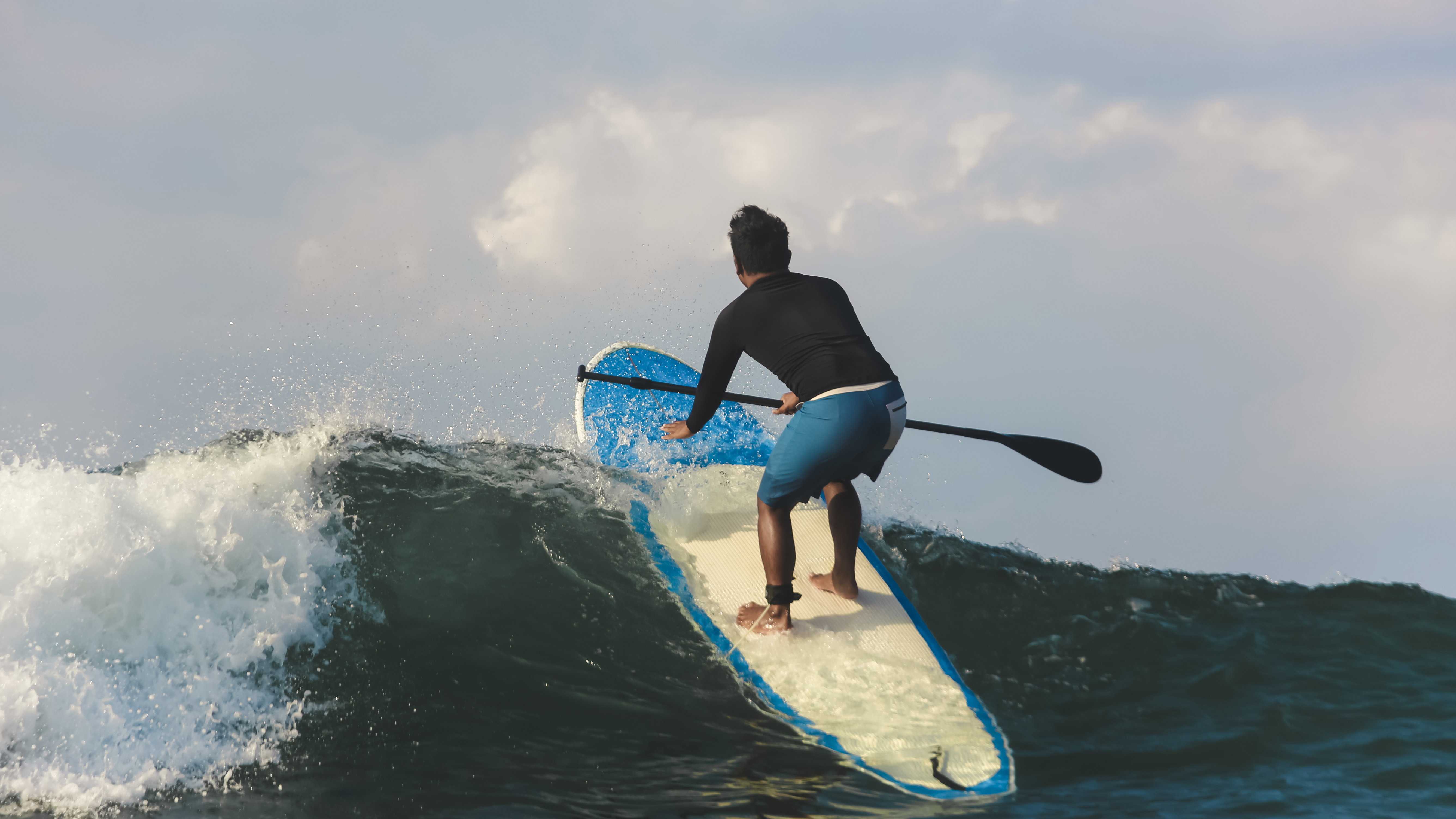
Do some research about where you intend paddling and, especially when paddling in unfamiliar locations, be very mindful of submerged objects and rip tides.
9. Paddle in a posse
It is safer, and generally more fun, to go paddleboarding with other people, be that a guide or your friends and family. If you are intending to go paddling alone, at least let someone know your plans and expected return time.
10. Paddle within your limits
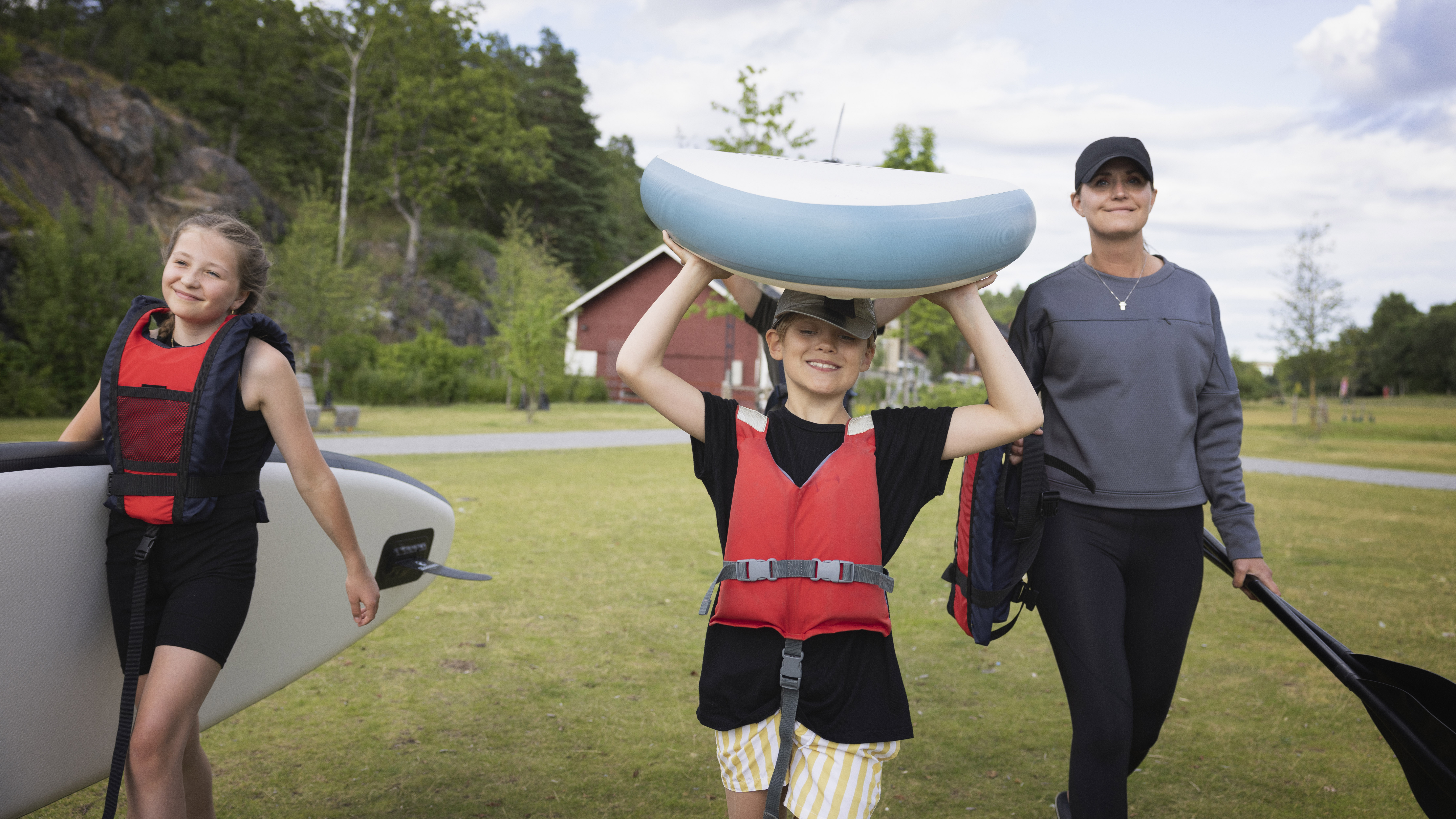
Whenever you’re SUPing independently, it’s essential you paddle within the limits of the weakest member of your group. Undertaken with care and the right gear, stand-up paddleboarding is very safe – but it’s no fun if you or someone else in your group is terrified.







